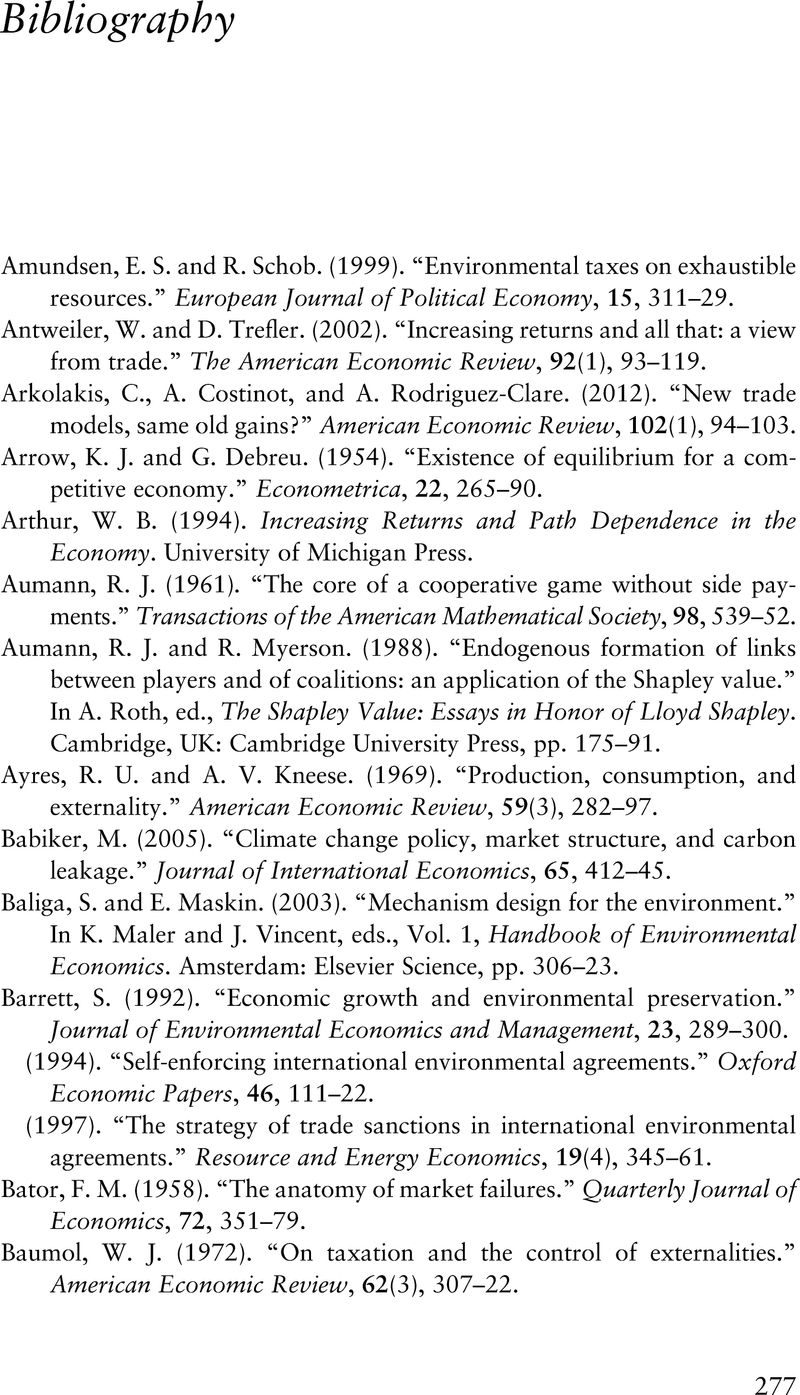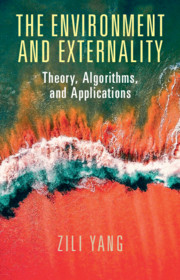Book contents
- The Environment and Externality
- The Environment and Externality
- Copyright page
- Dedication
- Contents
- Figures
- Tables
- Preface
- 1 The Environment and Externality
- 2 Modeling Pollution as an Externality Provision Problem
- 3 Analytical Results
- 4 Analytical Results
- 5 Extensions
- 6 Applications
- Epilogue
- Bibliography
- Index
- References
Bibliography
Published online by Cambridge University Press: 02 December 2020
- The Environment and Externality
- The Environment and Externality
- Copyright page
- Dedication
- Contents
- Figures
- Tables
- Preface
- 1 The Environment and Externality
- 2 Modeling Pollution as an Externality Provision Problem
- 3 Analytical Results
- 4 Analytical Results
- 5 Extensions
- 6 Applications
- Epilogue
- Bibliography
- Index
- References
Summary

Information
- Type
- Chapter
- Information
- The Environment and ExternalityTheory, Algorithms and Applications, pp. 277 - 285Publisher: Cambridge University PressPrint publication year: 2020
